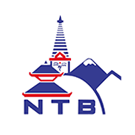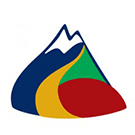Archives: FAQ
Does the Upper Mustang Trek have internet connectivity?
Do teahouse lodges on the Upper Mustang Trek have electricity?
In the Upper Mustang, electricity is available up to Chale and beyond Tsarang. While places like Samar, Ghiling, Syangboche, and Ghimi have electricity, it may not always be reliable. Backup solar systems are used to meet trekkers’ electricity needs. It is best to bring a power bank to charge your devices.
What is the temperature like in Upper Mustang?
Temperature in the Upper Mustang varies by season:
| Month | Day Temperature | Night Temperature |
| March-May | 14°C – 20 °C | -7 – -1 °C |
| June-August | 20°C – 30 °C | -2°C -0 °C |
| September-November | 12 °C – 20 °C | -7°C – -2 °C |
| December-February | 0 °C-5 °C | -20 –25 °C |
Are there Wi-Fi and mobile network facilities available during the Upper Mustang Trek?
Can I visit other restricted areas in Nepal with the same permit?
The permit for Upper Mustang is specific to that region and does not grant access to other restricted areas. Separate permits are required for places like Dolpo or Manaslu.
Can I get access to ATMs or exchange money in Upper Mustang?
How do I get to Jomsom from Kathmandu or Pokhara?
You can reach Jomsom quickly and conveniently by taking a domestic flight from Tribhuvan International Airport to Pokhara Airport, and then connecting to Jomsom Airport. Alternatively, you can take a scenic road trip by bus or jeep.
Is it possible to do the Upper Mustang Trek solo?
Solo trekking is restricted in Upper Mustang, and trekkers must be part of a group of at least two individuals to obtain a trekking permit. Nepal Sanctuary Treks is here to handle all your permit arrangements for a hassle-free trekking experience. For more information email us at info@nepalsanctuarytreks.com
Can I combine the Upper Mustang Trek with other treks in the Annapurna region?
Yes, you can combine the Upper Mustang Trek with other treks in the Annapurna region, such as the Annapurna Circuit or Annapurna Base Camp. This allows you to extend your adventure, experience diverse landscapes, and explore the rich cultural and natural beauty of the region. Combining these treks offers a more comprehensive experience of the Himalayas. Nepal Sanctuary Treks curate the trekking experiences based on your preferences, time-frame and physical fitness.
Are there any restrictions or guidelines for photography in the Upper Mustang?
In the Upper Mustang, always seek permission and respect local customs before taking photos at religious sites and cultural ceremonies to ensure a respectful and enjoyable experience. Learn more on Responsible Travel
What are the cultural and historical highlights of the Upper Mustang?
Highlights of the Upper Mustang Trek include the ancient city of Lo Manthang, Tibetan culture, stunning cave monasteries, and dramatic landscapes. Upper Mustang is often referred to as a “Living Museum” due to its well-preserved Tibetan culture. Visit ancient monasteries like Thubchen Gompa and Jampa Gompa, explore cave dwellings, and witness the Tiji Festival. Learn more about Upper Mustang
How can I get to the Upper Mustang?
What health issues or altitude-related concerns should I consider while trekking?
When trekking, it’s crucial to be aware of health concerns and altitude-related issues. Altitude sickness is a potential risk, so proper acclimatization is vital. Prepare for cold weather, stay hydrated, and follow necessary precautions. Nepal Sanctuary Treks includes sufficient rest days in its itineraries to aid acclimatization. Additionally, our trekking team monitors oxygen levels daily with an oximeter and tracks symptoms of altitude sickness using the Lake Louise system. Learn more about Altitude Sickness
What should I pack for Upper Mustang Trek
- Waterproof walking boots with suitable ankle support.
- Loose, casual waterproof trousers for trekking.
- Thermal coats or fleece.
- Warm socks.
- Fleece jacket or warm wool jumper.
- Windproof, waterproof outers for higher altitudes.
- Wool or fleece cap.
- Day sack to be carried personally.
- Warm gloves
- Two water bottles (Nalgene wide mouth bottles are the best).
- Personal water bottle.
- Camera, spare battery and battery charger.
- Toilet items and towels.
- Moisturizers
- Sunscreen
- Sunglasses
- Water purification tablets (Pristine, Biox Aqua or Aqua Mira)
- Favorite snack food.
- Books, iPod and cards etc.
- Camera with spare batteries and memory cards.
- Insurance certificate.
- Earplugs (optional), binoculars.
- Personal wipes, Biodegradable soap
- Dental floss
- Face Mask and Hand sanitizer
Gears
| · Day backpack: 25-35 L backpack (depending on one’s preferences).
· Small lock: Bring a small lock for your duffle bag. · Sack to organize and store your dirty laundry. · Trekking Poles · Sleeping bags: -10° C /14° F for a teahouse · Trekking Towels |
Personal first aid kit
Note: we provide a comprehensive group first aid kit but please bring personal medications and other items you might use regularly such as:
- Any personal medications.
- Malaria prophylactic tablets.
- Blister treatment (Compeed patches are the best).
- Rehydration powder e.g. Dioralyte.
- Analgesics (paracetamol, ibuprofen and aspirin).
- Plasters and zinc oxide tape.
- Throat lozenges.
- Diamox (helps with acclimatization)








